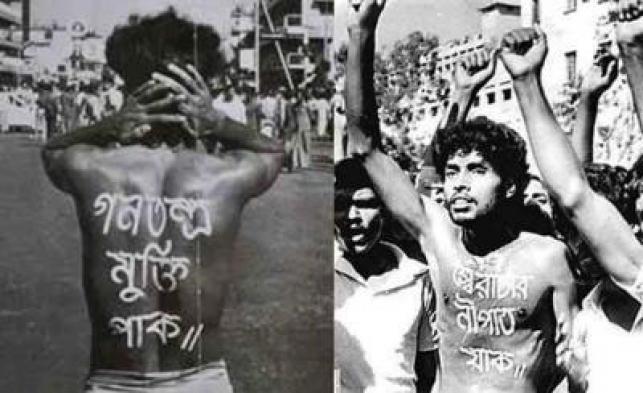THE world’s most densely populated country of any size also happens to be home to the world’s fastest-growing city. By the middle of the 21st century, Bangladesh, whose landmass could be fit 58 times into Brazil’s, will be home to 195m people—that is, Brazil’s population today. In short, this is not the sort of country where anyone would look to find a declining population.
Yet one needn’t look far. Barisal, an administrative division to the south of Dhaka, is home to a population that is just starting to shrink. The city of Barisal lies in the river delta of the Padma, as the main branch of the Ganges is called as it flows through lower Bangladesh and into the Bay of Bengal. Famous for its fertile soil, Barisal division, which had been a Hindu kingdom till the Mughals invaded Bengal, was once known as the “The crop-house of Bengal”.
According to the Census of India, 1901
“In Backergunge [Backerganj] all the towns are progressive and Barisal, with nearly 19,000 inhabitants, has grown by 22% in the course of the last decade. Its most flourishing town, however, is Jhalakati which is one of the largest marts in East Bengal. It is still small but shows a very rapid rate of expansion, and its population has considerably more than doubled itself during the last ten years”.
A good 100 years later, the 2001 census showed that 8.2m people lived in the six districts that make up Barisal division. But when census-takers returned in 2011, they found that the rate of growth had turned negative: 26,718 fewer people lived there than ten years before.
Barisal is the poorest of Bangladesh’s seven divisions. It is also the only one with a declining population. This is remarkable because, despite rapid migration into the cities, the country’s rural population is still growing. The day when more people will live in the cities than in the countryside is expected to be more than two decades away.
During 2001-11, the overall rate of population growth would have implied the addition of 1.8m people to the population of Barisal division. But instead it fell—not for want of reproduction, but because people were leaving it in droves. The division is the source of a massive migration that nobody is monitoring or even much noticing, says Peter Kim Streatfield, the director of the Centre for Population, Urbanisation and Climate Change at the ICDDR, an international, Dhaka-based health-research organisation.
So where do all the people go?
The answer brings us back to Dhaka, only a few dollars and seven hours’ journey by boat, where 80% of the residents are migrants. And so, rather mind-bogglingly, though Barisal district (a component of Barisal division) accounts for only 1.6% of the national population, according to the Bangladesh Health Survey, some 7% of women and 8% of men living in Dhaka’s slums come from this one district. A census and mapping of Bangladesh’s slums(see p. 48) would put Barisal district’s share even higher, though demographers tend to regard the former source as being the more reliable. Both agree that more of Dhaka’s slum-dwellers hail from Barisal than from any other of Bangladesh’s 64 districts.
So why are the people of Barisal pouring out? The square answer is nobody has a clue (though to judge by the variety of donor-project proposals that cite the phenomenon there would seem to be an overabundance of plausible answers). But there has been little serious analysis to disentangle the many economic and environmental causes of what looks like the busiest route of internal migration anywhere in Bangladesh.
One of the prime suspects behind Barisal division’s outpouring is the increase in its soil salinity. The government’s own maps show that 29% of Barisal division’s arable land was classified as “salt-affected” in 2010, up from 20% in 1973. The salinisation has been quicker and more land is affected than in any of Bangladesh’s other coastal areas. Rising sea levels are believed to have contributed to the trend, aggravating the effects of intensive agriculture.
Two devastating cyclones have also played a big part, according to Nazrul Islam of the Centre for Urban Studies in Dhaka. The storm surge of both cyclones, Sidr (2007) and Aila(2009), destroyed embankments, left coastal areas submerged under salt water for months and paved the way for an expansion of lucrative shrimp farming. Engineers who are building cyclone shelters in Barisal division say that in some places they can bore a tube-well 400 metres deep without reaching the freshwater they need to supply the makeshift encampments.
The possible impact of saline intrusion from the Bay of Bengal on people’s health was first suggested at in a study published in the Lancet, a British medical journal. Researchers looked at the hospital admissions of pregnant women in one of the port cities of south-western Bangladesh who suffered from eclampsia, an acute and often deadly complication. They found that the number of admissions of women diagnosed with eclampsia and hypertension peaked during the dry season, when the water’s salinity peaks. That’s not quite enough to establish their eclampsia’s cause. There can be no doubting however that, whatever the science reveals, people are leaving the former kingdom at a furious rate.
At times the vicious feud between Bangladesh’s two political dynasties distracts the world’s attention from the country’s biggest challenges: its unique vulnerability to natural disasters, environmental degradation and the mass migration that they cause. For the still very many Bangladeshis who live outside the capital, these are the more pressing issues.
Source: The Economist









